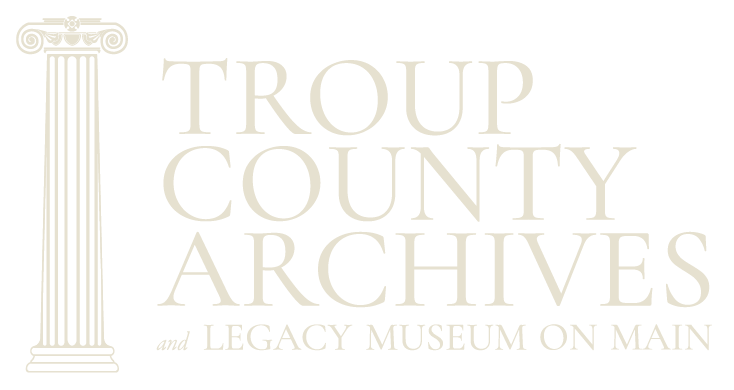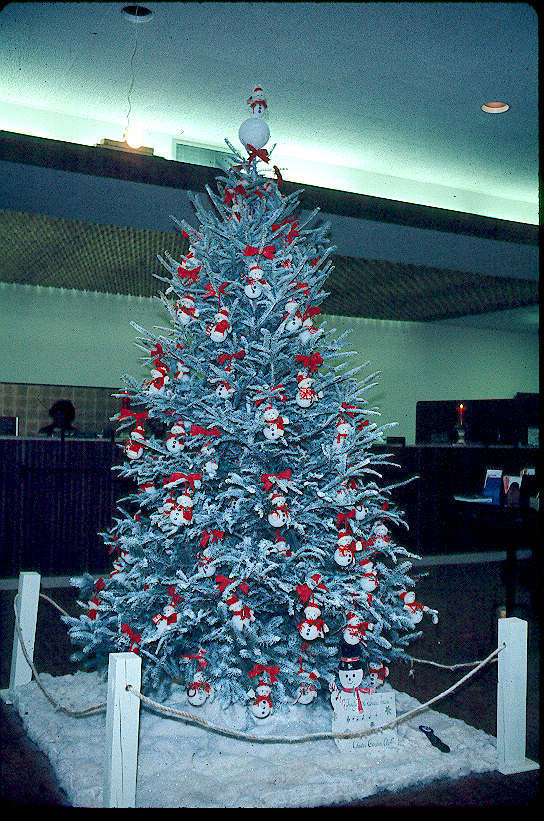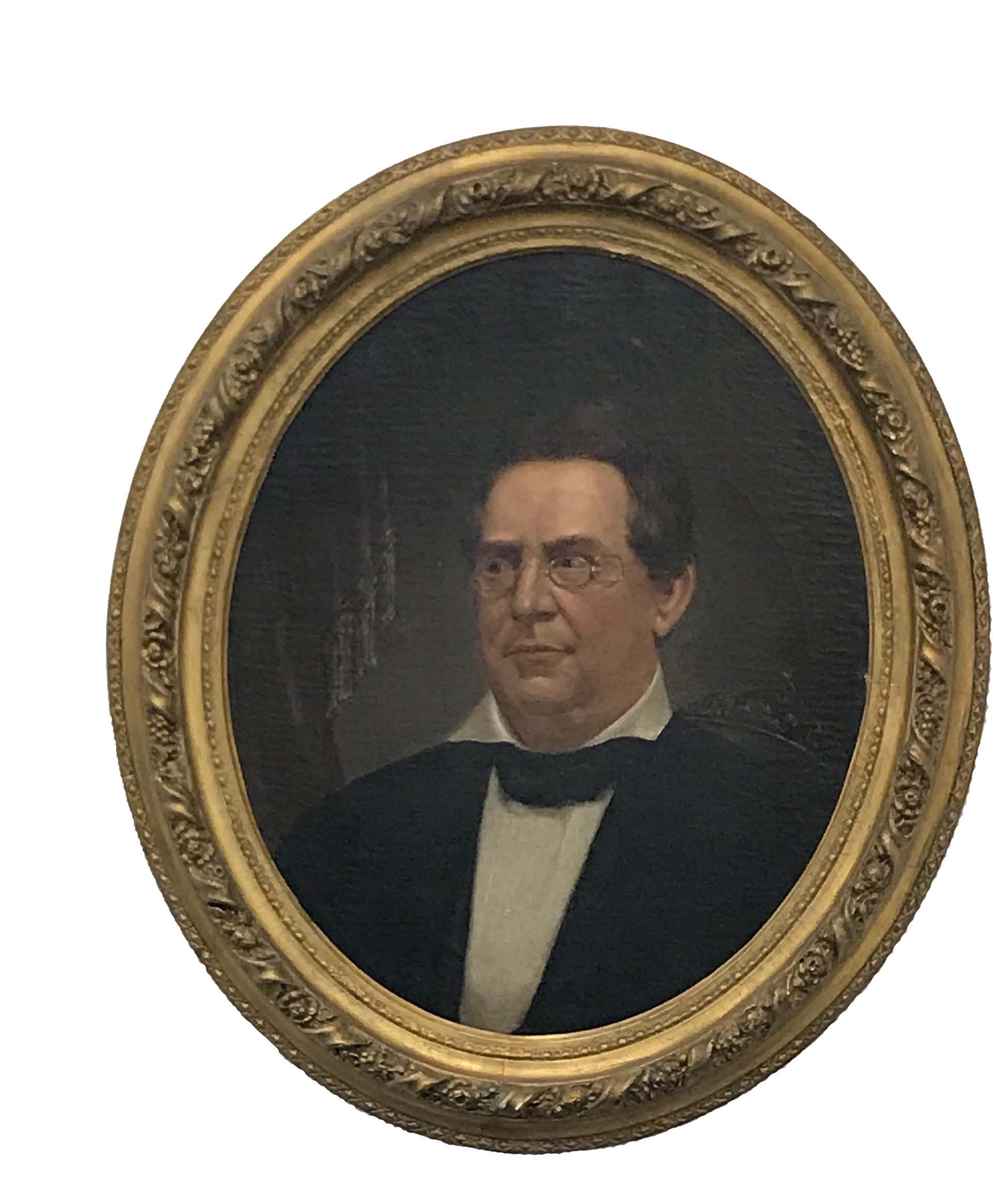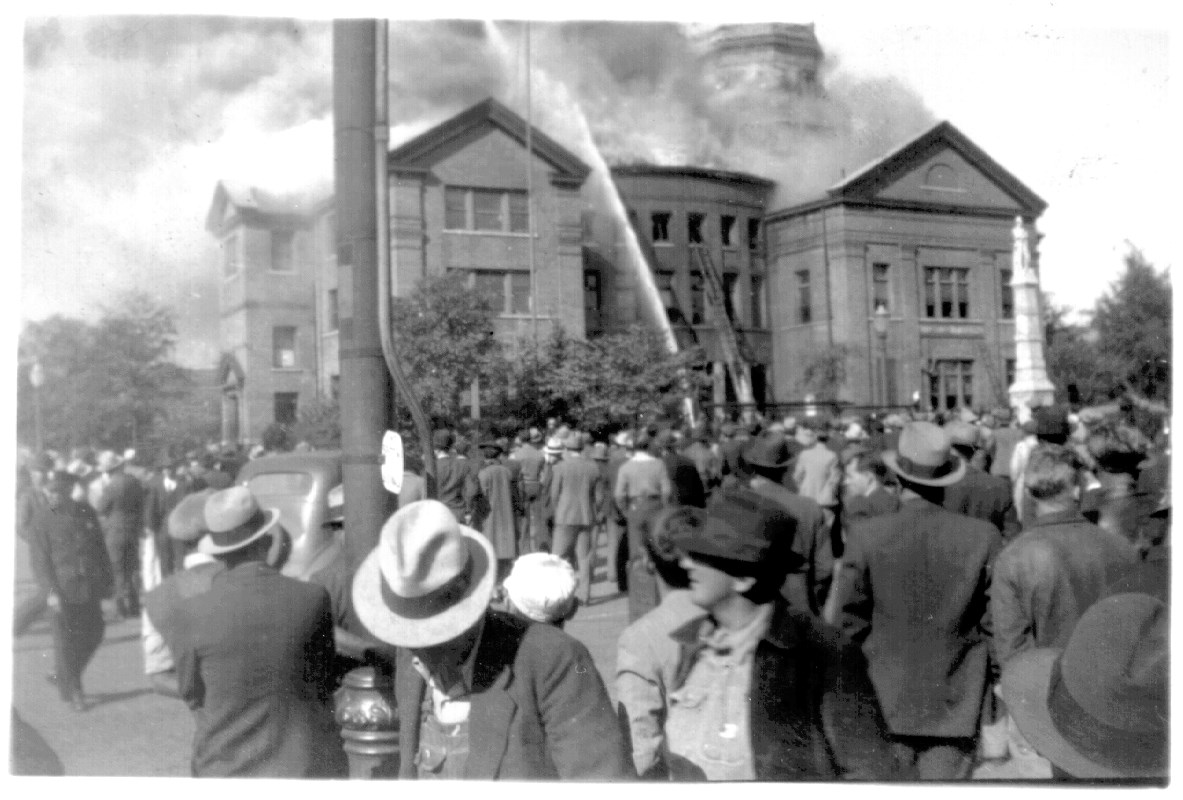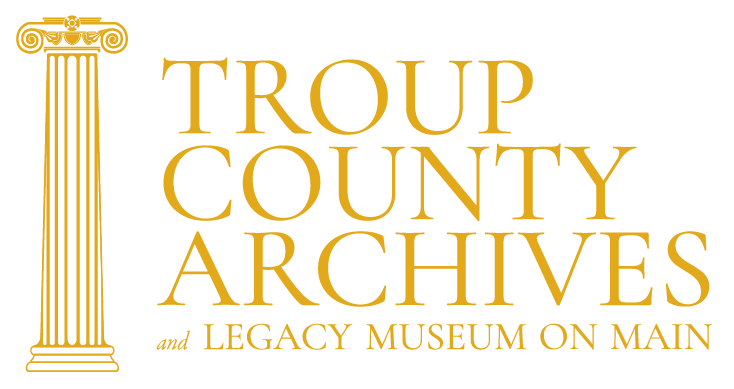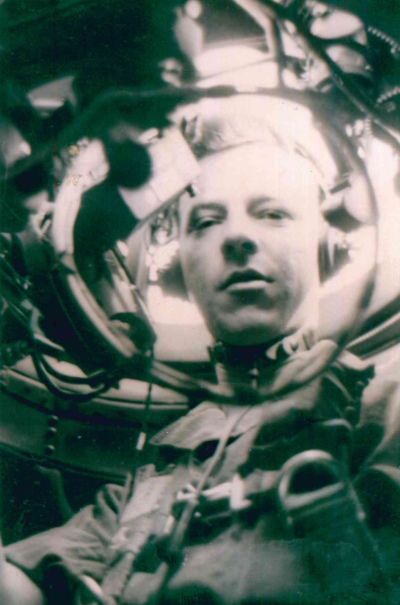
A photograph of Longshore in the blister of a B-29 Superfortress. TCA Collections donated by Guy Longshore.
Guy Longshore, of LaGrange, served in the U.S. Army Air Corps during World War II. He was a Command Gunner on a B-29 Superfortress stationed in Guam and Saipan from 1944 to 1945. As with many veterans he has captivating stories, however, he also has photographs. During his time in service, Longshore took photographs on the ground and from the air using his personal Argus camera, which he remembers costing just twelve dollars. After the Japanese surrender on September 2, 1945, Longshore was detailed to fly on B-29 missions over Japan, dropping supplies to Allied troops and American Prisoners of War who were still there. During one of these missions, Longshore took an aerial view showing the bombing damage to Tokyo, Japan from the bombardier’s seat of a Boeing B-29 Superfortress using U.S. Army camera equipment. His father sent him a roll of color film which he used to produce what the Smithsonian National Air and Space Museum believes to be the only color photos of B-29 and P-51 Mus-tang aircraft in action. His images are on display at the Smithsonian National Air and Space Museum, World War II Museum in New Orleans, Louisiana, and a number of other esteemed museums.
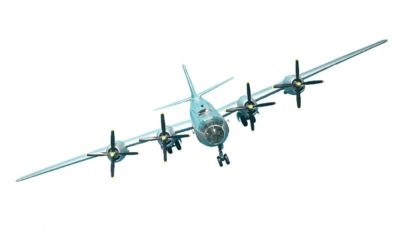
Image of the Model B-29 that hangs in Legacy Museum. Donation of Mark Traylor in honor of Guy Longshore. TCA Collections.
Now, his photographs, as well as a model B-29 airplane, are on display in Legacy Museum as well. We were delighted to have received a donation from Guy Longshore of his photographs. Mark Traylor constructed the model airplane and donated it in honor of Mr. Longshore. The model B-29 airplane is a scale model similar to the B-29 on which Longshore flew.
Often remembered in association with the Atomic Bomb, the Boeing B-29 Superfortress was produced quickly and in mass after the Japanese attack on Pearl Harbor. Almost 4,000 were produced between 1943 and 1946; 668 of those were built in Georgia at the Bell Aircraft Company. B-29s were one of the largest and most technologically-advanced aircraft operational during World War II. It featured innovations such as a pressurized cabin, an analog computer, and a “Central Fire System” that included four gun turrets controlled electronically. As a long-range, and high-altitude bomber, B-29s were ideal for long distances and were only used in the Pacific. As many as 1,000 B-29s at a time bombed Tokyo, destroying large parts of the city, and it was B-29s, Enola Gay and Bockscar, that dropped the atomic bombs on Hiroshima and Nagasaki. Two weeks after the Japanese surrender, Longshore photographed the bombing damage to Tokyo. His images include views of Boeing B-29 Superfortresses and P-51 Mustangs on the ground and in flight, a view of Mount Fuji, and pictures of B-29s grounded overnight at Iwo Jima. In addition to his photographs, portions of his unpublished memoirs, stories, and anecdotes have been processed into a manuscript collection. Mr. Longshore has both pleasant and difficult memories alike. He has shared tales of surfing over deadly coral reefs to enjoy swimming in the Pacific and stories of dropping supplies to prisoners of war. He took photographs of some of those POW camps, in which the men had used rocks to spell out how many prisoners were there. The stories and memories are fading as “America’s Greatest Generation” ages. We are fortunate to have a record of Mr. Long-shore’s memories.
Upon accepting Mr. Longshore’s and Mr. Traylor’s donations, a number of questions arose. How does one hang a model airplane from a twenty-six-foot-high ceiling?
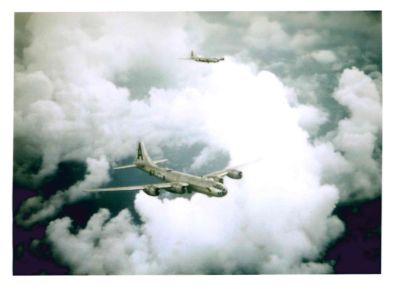
One of the few known color images of B-29’s in flight. TCA Collections.
How will Mr. Longshore’s images be best viewed? How can we display the plane and still remain a family-friendly museum? Often, during World War II airmen took to painting portraits on the front fuselage of their planes, which has become known as nose art. With its origins in World War I, nose art is still done today. Impromptu art has been recorded and fondly remembered by those who served.
A vast majority of the nose art from the Second World War is what many would expect from young men who were thousands of miles from home and rarely in contact with the opposite gender. Mr. Traylor’s recent donation features nose art of its own. This nose art depicts a pin-up girl and the words “Humpin’ Honey,” which may be a reference to flying over “The Hump” from India to China. Of course, you may be hard-pressed to actually view this nose art, as the museum staff has displayed the plane in such a way that it is difficult to view, particularly by our younger visitors. We look forward to those younger visitors’ reactions to the new item on display.
— Alexander O. Hughes
